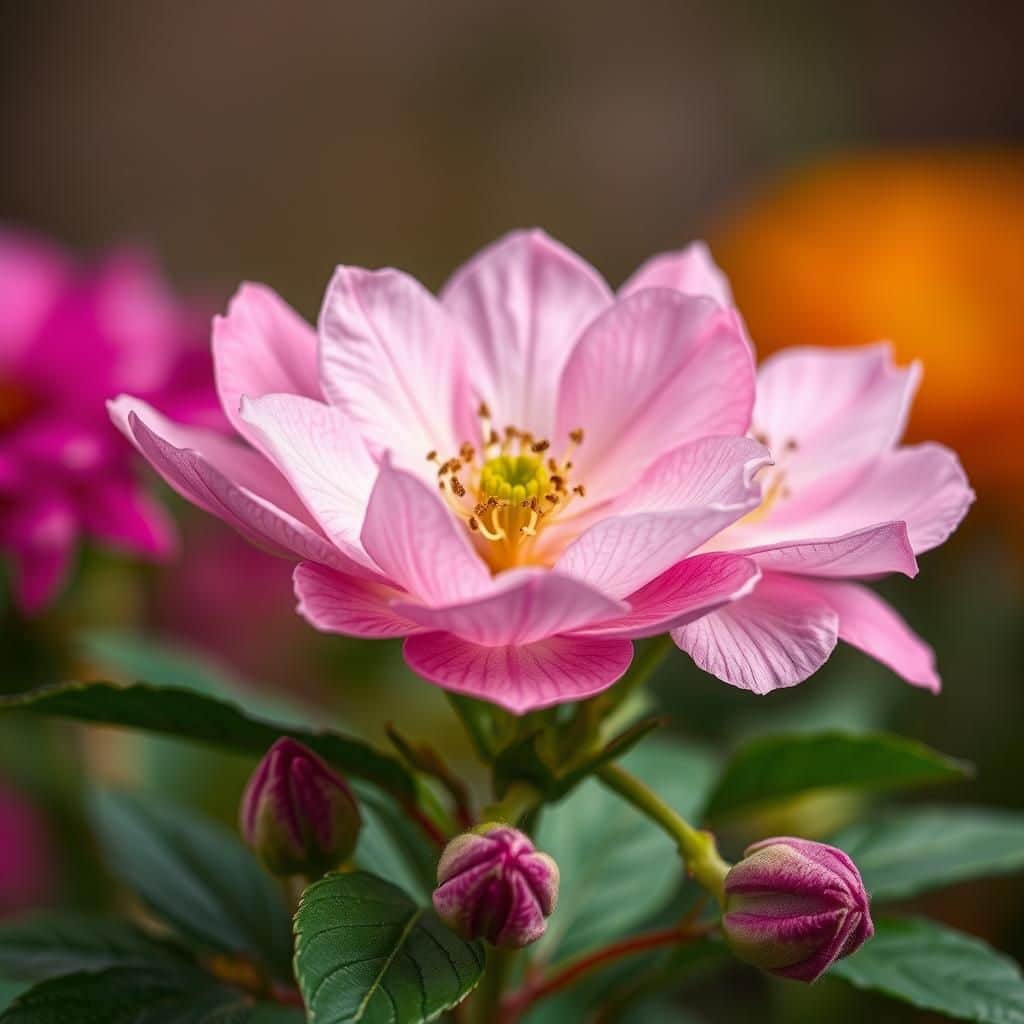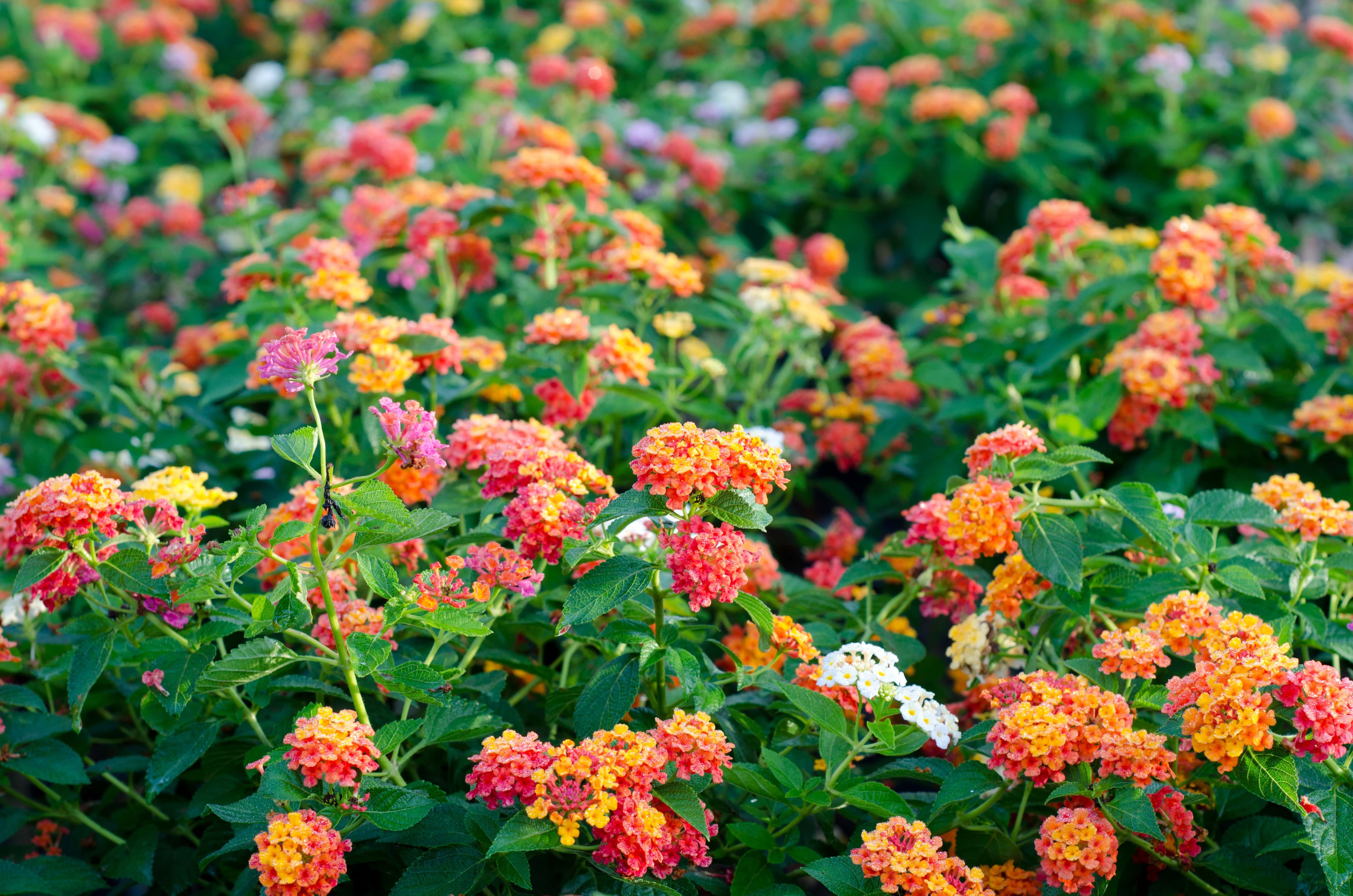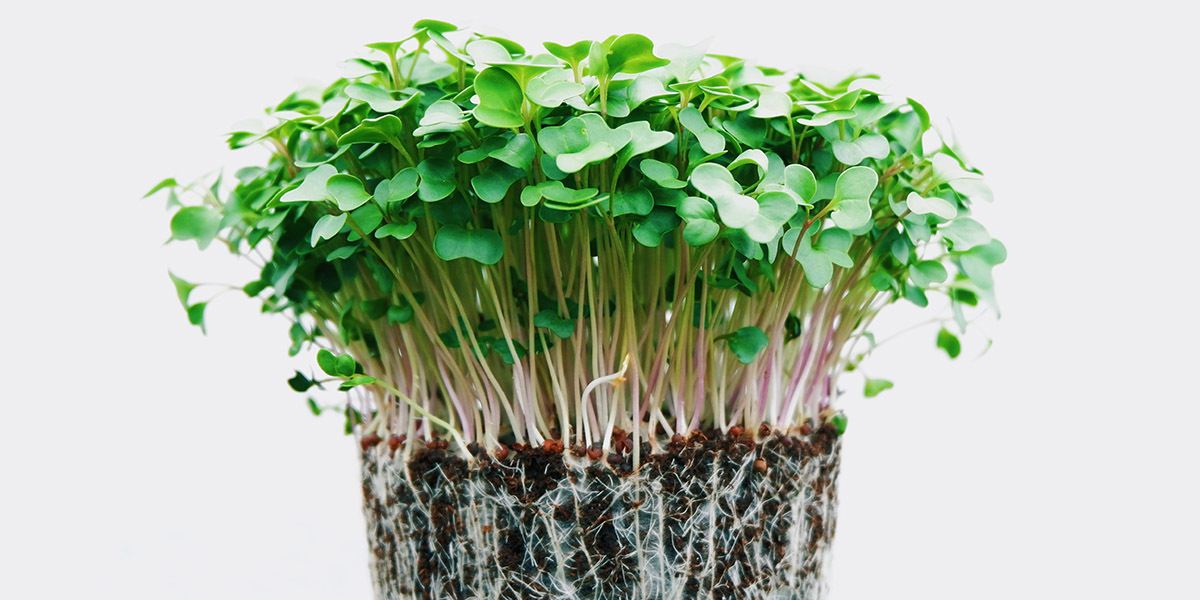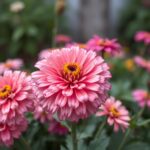What is the Most Successful Flowering Plant? Discover the Top Contenders and Their Secrets

In the vast world of botany, flowering plants, or angiosperms, hold a unique position due to their diverse forms and significant ecological roles. Among the myriad species, some have claimed the title of the most successful flowering plants based on their widespread distribution, adaptability, and contributions to the environment. This article delves into the top contenders for this prestigious title, exploring the secrets behind their success. From vibrant orchids to resilient daisies, we will uncover what makes these plants thrive in various ecosystems and how they continue to captivate the attention of botanists and nature enthusiasts alike.
What is the Most Successful Flowering Plant?
The most successful flowering plant is often considered to be the angiosperms, which dominate the plant kingdom in terms of number of species and ecological distribution. Angiosperms are characterized by their ability to produce flowers and seeds enclosed within a fruit, which enhances their reproductive success through efficient pollination strategies and seed dispersal mechanisms. This group includes a diverse array of plants, from grasses and shrubs to trees, making them integral to various ecosystems. Their adaptability to different environments, along with their complex relationships with pollinators and herbivores, contributes significantly to their success, allowing them to thrive in nearly every habitat on Earth.
Characteristics of Angiosperms
Angiosperms possess distinctive characteristics that contribute to their evolutionary success. These include the presence of flowers which facilitate targeted pollination from animals, capturing pollen in a reliable manner. Additionally, angiosperms produce seeds that are often encased in fruits, which not only protect the seeds but also aid in their dispersal through various mechanisms, such as wind, water, and animal interactions. This double strategy of utilizing both floral and fruity adaptations has led angiosperms to dominate many ecosystems globally.
Diversity of Angiosperms
With over 300,000 species, angiosperms represent the most diverse group in the plant kingdom. This diversity arises from adaptations that allow them to colonize a wide range of environments, from tropical rainforests to arid deserts. Different families and genera exhibit unique structural and physiological traits, which enable them to thrive under various environmental pressures. Such extensive diversification can be attributed to their rapid evolutionary rate and ability to form symbiotic relationships with other organisms, enhancing their survival odds.
Pollination Strategies
Angiosperms employ a myriad of pollination strategies to ensure successful reproduction. While many species rely on wind for pollen transfer, a significant number utilize animal pollinators, including bees, birds, and bats. This reliance on biotic pollinators has led to the evolution of specific floral traits that attract these creatures, such as vibrant colors, enticing scents, and sugary nectar. Such adaptations increase the likelihood of cross-pollination, thus contributing to greater genetic diversity within populations, which is vital for their long-term success.
Role in Ecosystems
Angiosperms play a critical role in ecosystem dynamics by providing food and habitat for countless organisms. They form the base of most terrestrial food webs, supporting not only herbivores but also the carnivores that prey on them. Additionally, their presence helps to stabilize soils and maintain the water cycle through processes like transpiration. This functional importance underscores their role in promoting biodiversity and ecosystem health, demonstrating their success as a group.
Economic Importance
The economic significance of angiosperms is vast, impacting agriculture, horticulture, and forestry. Many of the world's most important crops, including grains, fruits, and vegetables, are derived from flowering plants. Their produce supports human diets and livelihoods, while various species are cultivated for ornamental purposes or for their medicinal properties. The economic reliance on angiosperms highlights their multifaceted contributions to human well-being and the global economy.
| Characteristic | Description |
|---|---|
| Diversity | Over 300,000 species globally. |
| Pollination | Utilizes both wind and animal pollinators. |
| Fruit Production | Seeds enclosed in fruits enhance dispersal. |
| Ecosystem Role | Base of terrestrial food webs. |
| Economic Value | Source of major crops and horticultural products. |
What is the most successful flower plant?

The most successful flower plant in terms of popularity, versatility, and ecological impact is arguably the rose. Roses are cultivated worldwide for their beauty, fragrance, and symbolic meanings, making them a staple in gardens and floral arrangements.
Characteristics of Roses
Roses are known for their diverse range of colors, sizes, and forms, making them a favorite among gardeners and landscapers. Their adaptability allows them to thrive in varied climates and soils.
- Variety: Roses come in numerous species and hybrids, offering a wide range of choices for different aesthetics.
- Durability: Many rose varieties are hardy and can withstand various growing conditions, making them resilient.
- Fragrance: Many roses are renowned for their sweet and captivating scents, which attract pollinators.
Ecological Impact of Roses
Roses support various pollinators, including bees and butterflies, which are crucial for maintaining local ecosystems. Their blooms provide nectar and pollen that sustain these important insects.
- Food Source: The nectar from roses helps nourish pollinators, promoting biodiversity.
- Habitat: Rose bushes offer shelter for small wildlife, contributing to habitat diversity.
- Soil Health: The root systems of roses can help improve soil structure and fertility.
Cultural Significance of Roses
Roses have profound cultural and symbolic meanings across different civilizations. They often represent love, beauty, and passion, making them ideal for various occasions.
- Symbolism: Different colors of roses convey different sentiments; for instance, red roses symbolize love and respect.
- Traditions: Roses are commonly used in wedding ceremonies, symbolizing romance and unity.
- Festivals: Many cultures celebrate festivals dedicated to roses, highlighting their importance in horticulture and heritage.
Popular Rose Varieties
Among the many types of roses, certain varieties stand out due to their unique features and widespread cultivation. These include the Hybrid Tea, Floribunda, and Climbing roses.
See also:
- Hybrid Tea Roses: Known for their beautiful blooms and long stems, making them ideal for cut flowers.
- Floribunda Roses: Valued for their clusters of blooms, providing a continuous display of color.
- Climbing Roses: These roses can grow vertically, making them perfect for trellises and arbors.
Cultivation and Care Tips for Roses
Successful rose cultivation requires attention to several key care techniques. Roses thrive in well-drained soil with adequate sunlight and regular maintenance.
- Soil Preparation: Ensure the soil is enriched with organic matter and has good drainage for optimal growth.
- Watering: Roses require consistent moisture but avoid overwatering to prevent root rot.
- Pruning: Regular pruning helps promote healthy growth and increases air circulation around the plant.
What is the most successful plant on Earth?

The most successful plant on Earth is arguably the grass family, scientifically known as Poaceae. Grasses are ubiquitous and thrive in a variety of environments around the globe, from savannas and wetlands to temperate forests and urban areas. They dominate many ecosystems and have a significant ecological impact due to their ability to grow in diverse conditions, their rapid growth rates, and their robust reproductive strategies.
The Adaptability of Grasses
Grasses are incredibly adaptable, which contributes to their success as a species. They can thrive in various climates, soil types, and altitudes. This adaptability is a result of several key features:
- Efficient Photosynthesis: Grasses have evolved C4 photosynthesis, which allows them to efficiently capture sunlight and convert it into energy even in conditions of low water availability.
- Root Systems: Their extensive root systems help prevent soil erosion and allow them to access nutrients and water deep within the soil.
- Rapid Regeneration: Grasses can quickly regrow after being grazed or mowed, making them resilient and well-suited for disturbed environments.
Ecological Impact of Grasses
Grasses play a crucial role in maintaining ecological balance and providing habitat for a myriad of organisms. Their ecological contributions include:
- Habitat Creation: Grasslands serve as habitats for numerous animal species, including herbivores, insects, and birds.
- Soil Health: The growth of grasses improves soil structure and health by enhancing organic matter content and promoting microbial activity.
- Carbon Sequestration: Grasses absorb carbon dioxide from the atmosphere, helping mitigate climate change through carbon sequestration.
Importance in Agriculture
Grasses are fundamental to agriculture, providing essential crops and forage for livestock. Their agricultural importance includes:
- Cereal Grains: Many of the world's staple foods, such as wheat, rice, and maize, are derived from grass species.
- Forage Crops: Grasses such as alfalfa and ryegrass are crucial for livestock feed, supporting the global meat and dairy industries.
- Sustainable Practices: Grasses contribute to sustainable agricultural practices by enhancing soil health and reducing erosion.
Global Distribution of Grasses
Grasses are found on every continent, thriving in various ecosystems. Their global distribution highlights their success:
- Grasslands: Vast areas of the world, including prairies, savannas, and steppes, are dominated by grasses.
- Adaptation to Different Climates: From tropical regions to temperate zones, grasses have adapted to extreme conditions, including droughts and floods.
- Urban Environments: Grasses are commonly used in landscaping and parks, demonstrating their versatility and aesthetic appeal.
Evolution and Diversity of Grasses
The evolutionary success of grasses is reflected in their diversity. With thousands of species, they exhibit significant variation in form and function:
- Diversity of Species: There are over 11,000 species of grasses, ranging from small garden varieties to towering bamboo.
- Adaptations: Grasses exhibit various adaptations, such as drought resistance and heat tolerance, to survive in specific environments.
- Genetic Variation: This genetic diversity allows grasses to continue evolving and adapting to changing environmental conditions.
What is the best plant that blooms all year?

The best plant that blooms all year is the Episcia, also known as the chocolate violet. This perennial plant is part of the Gesneriaceae family and is famous for its vibrant flowers and attractive foliage. Episcia thrives indoors and can do well in shaded areas, making it an ideal choice for houseplants or garden spots that lack direct sunlight. The flowers typically come in shades of red, orange, pink, and yellow, adding constant color to any space throughout the year.
Characteristics of Episcia
The Episcia plant has several notable characteristics that contribute to its popularity among garden enthusiasts.
- Evergreen Foliage: The lush, green leaves are not only beautiful but also provide a backdrop for the bright flowers.
- Low Maintenance: This plant is relatively easy to care for, requiring minimal watering and care.
- Variety of Colors: The flowers can bloom in many colors, enriching any garden or indoor setting.
Cultivation Tips for Episcia
To ensure that your Episcia blooms continuously, following the right cultivation tips is essential.
- Soil Requirements: Use well-draining potting soil that retains moisture without becoming waterlogged.
- Light Conditions: Provide indirect sunlight; too much direct sunlight can damage the leaves and flowers.
- Watering Techniques: Water moderately, allowing the soil to dry slightly between waterings to prevent root rot.
Ideal Environments for Episcia
Episcia prefers specific environmental conditions to thrive throughout the year.
See also:
- Temperature: Maintain a warm environment, ideally between 65°F to 75°F (18°C to 24°C).
- Humidity: Higher humidity levels are favorable, so consider misting the plant or placing it near a humidity tray.
- Container Considerations: Use pots with drainage holes to prevent excess water accumulation.
Pest Management for Episcia
Managing pests effectively can help keep your Episcia plant healthy and blooming.
- Common Pests: Watch out for aphids, spider mites, and mealybugs, which can damage the plant.
- Natural Remedies: Use insecticidal soap or neem oil to treat infestations without harming the plant.
- Regular Inspections: Examine your plant regularly for any signs of distress or pests to catch issues early.
Propagation of Episcia
Episcia can be propagated easily, allowing enthusiasts to grow new plants from existing ones.
- Leaf Cuttings: You can root leaf cuttings in water or directly in soil for new plants.
- Division: Split the mother plant into smaller sections, each with roots and leaves for propagation.
- Timing: Spring is the best time to propagate, as the plant is more active during this season.
What is the most profitable plant to plant?

The most profitable plant to plant largely depends on various factors such as climate, soil type, market demand, and individual investment capacity. However, some plants have consistently shown high profitability across different regions. Generally, herbs, flowers, and fruits are among the most lucrative options.
Understanding Market Demand
When considering which plants to grow, it's crucial to analyze market demand. Plants that are in high demand can yield better profits.
- Research local markets: Investigate which plants are scarce and can fetch higher prices.
- Consumer preferences: Stay updated on trends in culinary and medicinal herbs, as these can significantly influence profitability.
- Seasonal changes: Understand how seasonality affects the supply and demand of different plants.
High-Value Crops
Several crops are known for their high-value return on investment. These are generally quicker to grow and sell for a substantial profit.
- Saffron: Known as the world's most expensive spice, saffron requires minimal space and can yield a high return.
- Goji Berries: These nutrient-rich berries are popular for health-conscious consumers and can be sold fresh, dried, or in products.
- Truffles: While they take years to mature, the metaphoric gold of the culinary world ensures exceptional profits once harvested.
Perennials vs Annuals
Choosing between perennials and annuals can also impact profitability. Each type has its own benefits.
- Perennials: Once established, they can provide yields for multiple years, reducing replanting costs.
- Annuals: While they require yearly planting, successful annual crops can provide quicker returns on investment.
- Maintenance needs: Perennials generally require less maintenance once established, which can save labor costs.
Organic Farming Practices
Implementing organic farming practices can significantly enhance the profitability of your crops.
- Higher market prices: Organic produce often sells for a premium, attracting customers willing to pay more.
- Sustainability: Organic farming promotes soil health and biodiversity, leading to more sustainable production over time.
- Brand identity: Growing organic crops can help establish a strong brand image, appealing to eco-conscious consumers.
Regional Considerations
Each region has unique characteristics that can affect crop profitability. Understanding your local environment is essential.
- Climate suitability: Certain plants thrive in specific climates; ensure that your chosen crop is suitable for your area's conditions.
- Soil quality: Test your soil to understand its nutrition and pH level, which will determine plant success.
- Local pests and diseases: Being aware of threats in your area can help you select resilient plant varieties.
Questions from Our Readers
What is the most successful flowering plant?
The most successful flowering plant is often considered to be the dandelion (Taraxacum officinale). Its ability to thrive in a variety of environments, reproduce rapidly through both seeds and vegetative means, and its resilient nature against adverse conditions contribute to its global presence and success.
Why are flowering plants important for ecosystems?
Flowering plants play a crucial role in ecosystems as they provide food and habitat for a wide range of organisms. They support pollinators, which are vital for the reproduction of many crops and wild plants, thus maintaining biodiversity and contributing to overall ecosystem health.
How do flowering plants reproduce?
Flowering plants typically reproduce through sexual and asexual methods. Sexual reproduction involves the production of seeds through the fusion of male and female gametes, while asexual reproduction can occur through methods such as cuttings or runners, allowing for rapid population expansion and colonization of new areas.
What adaptations do successful flowering plants have?
Successful flowering plants possess various adaptations that enhance their survival and reproduction. These adaptations include colorful flowers to attract pollinators, the ability to produce numerous seeds, and physical traits such as drought resistance or temperature tolerance, which enable them to thrive in diverse and challenging environments.
See also:

If you want to read more articles like What is the Most Successful Flowering Plant? Discover the Top Contenders and Their Secrets, we recommend you check out our Flowers category.
Leave a Reply
Related Articles